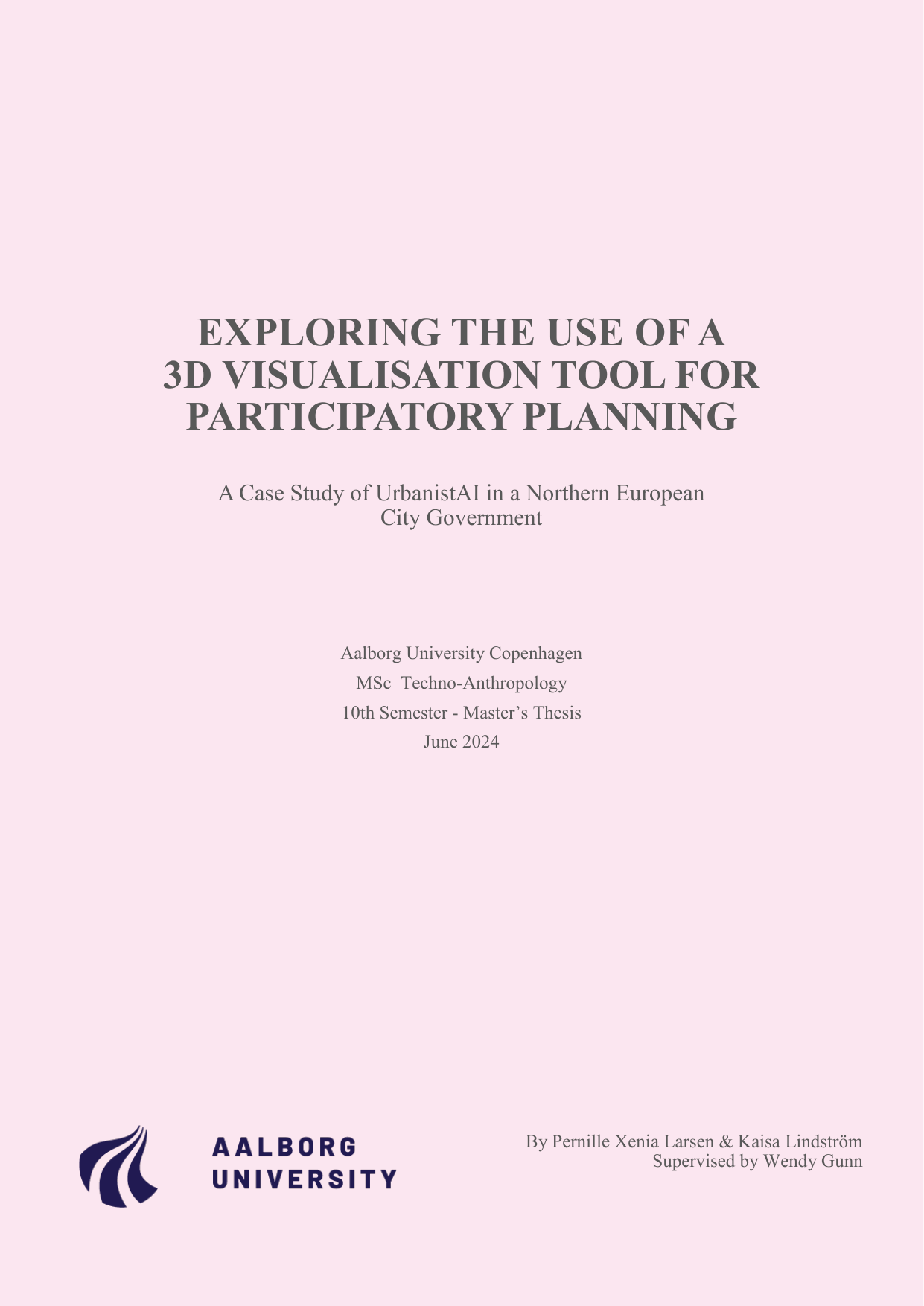
EXPLORING THE USE OF A 3D VISUALISATION TOOL FOR PARTICIPATORY PLANNING: A Case Study of UrbanistAI in a Northern European City Government
Translated title
EXPLORING THE USE OF A 3D VISUALISATION TOOL FOR PARTICIPATORY PLANNING
Authors
Term
4. term
Education
Publication year
2024
Submitted on
2024-06-07
Pages
103
Abstract
Participatory planning continues to provoke debate amongst practitioners and academics alike, with digital tools adding complexity to the field. This thesis explores the use of a digital tool for participatory planning, focusing on the Pilot Phase of UrbanistAI within a Northern European city government. Using a case study approach, the research investigates the challenges a municipality faces when adopting a digital participatory tool, more specifically a 3D visualisation tool using text-to-image technology to support public participation in urban planning processes. Drawing on Communicative Planning Theory and Post-Actor-Network Theory, particularly the concepts of Ontological Multiplicity and Fluid Technology, the study aims to provide a nuanced understanding of how digital tools, like UrbanistAI, interact within diverse stakeholder engagements. The empirical data is based on semi-structured interviews, participant observations, and document analysis. The resulting analysis on the tool’s ontologies - a visualisation tool for communication, and a commercial digital tool - highlights the benefits of the tool’s fluidity for practising CPT principles. However, the high adaptability of the tool creates a risk for unpredictable outcomes, therefore an approach to ‘confine’ fluidity was proposed for practitioners’ to make agreements to ensure more expected outcomes. Furthermore, the findings show that practitioners’ tendency to view the tools as experimental leads to a lack of accumulated knowledge across departments for using digital participatory tools efficiently. The study contributes by offering practical insights for the city government to inform their decision-making and creating a shared space for reflections among the practitioners. A key contribution of the research is the examination of a 3D visualisation tool that uses text-to-image technology in a real-life workshop setting. The study also adds to the broader discourse on the role of digital tools in participatory planning with a techno-anthropological lens.
Documents
